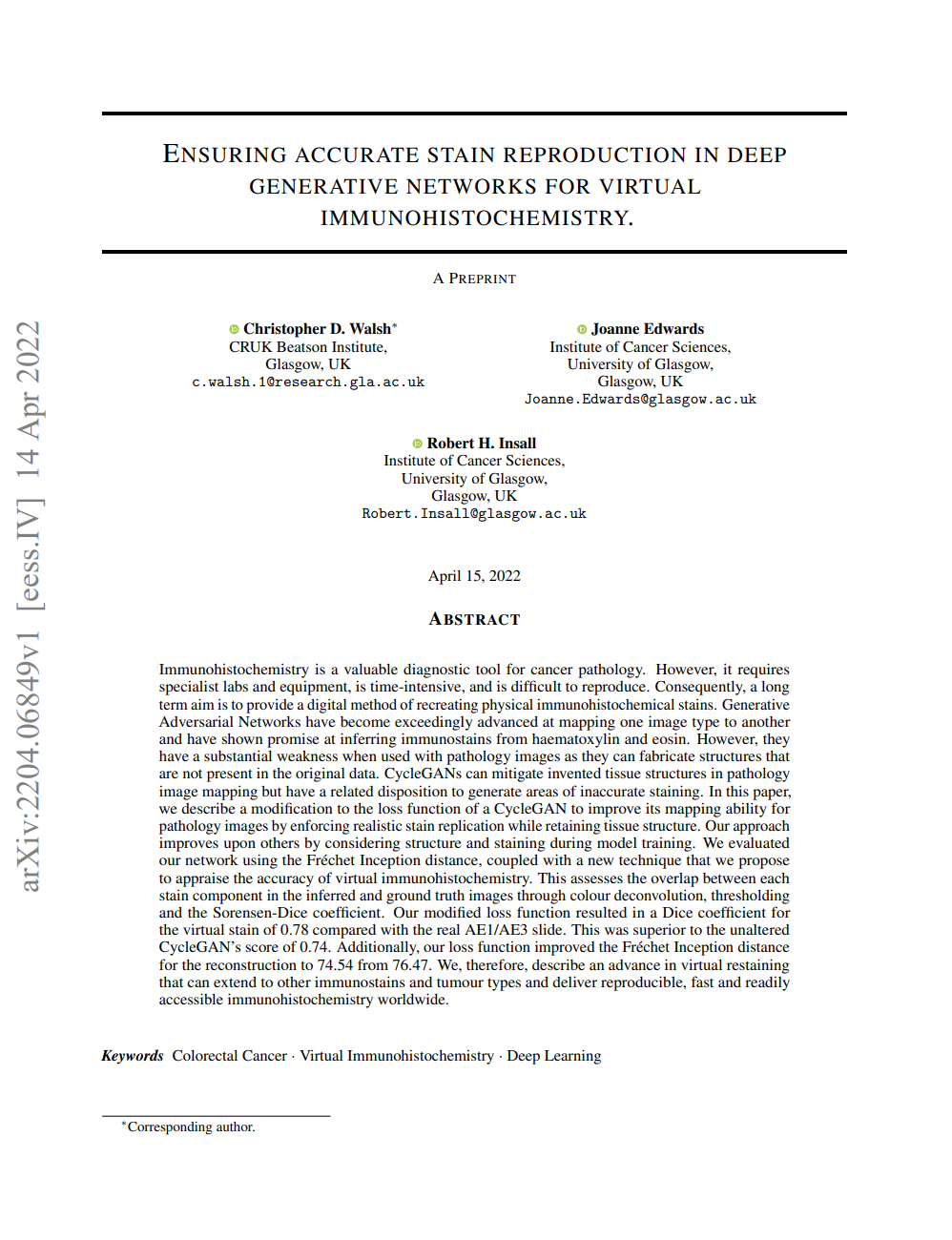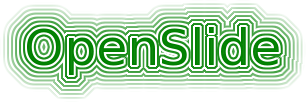Reading time: 1 minutes.
Abstract :
Immunohistochemistry is a valuable diagnostic tool for cancer pathology. However, it requires specialist labs and equipment, is time-intensive, and is difficult to reproduce. Consequently, a long term aim is to provide a digital method of recreating physical immunohistochemical stains. Generative Adversarial Networks have become exceedingly advanced at mapping one image type to another and have shown promise at inferring immunostains from haematoxylin and eosin. However, they have a substantial weakness when used with pathology images as they can fabricate structures that are not present in the original data. CycleGANs can mitigate invented tissue structures in pathology image mapping but have a related disposition to generate areas of inaccurate staining. In this paper, we describe a modification to the loss function of a CycleGAN to improve its mapping ability for pathology images by enforcing realistic stain replication while retaining tissue structure. Our approach improves upon others by considering structure and staining during model training. We evaluated our network using the Fréchet Inception distance, coupled with a new technique that we propose to appraise the accuracy of virtual immunohistochemistry. This assesses the overlap between each stain component in the inferred and ground truth images through colour deconvolution, thresholding and the Sorensen-Dice coefficient. Our modified loss function resulted in a Dice coefficient for the virtual stain of 0.78 compared with the real AE1/AE3 slide. This was superior to the unaltered CycleGAN’s score of 0.74. Additionally, our loss function improved the Fréchet Inception distance for the reconstruction to 74.54 from 76.47. We, therefore, describe an advance in virtual restaining that can extend to other immunostains and tumour types and deliver reproducible, fast and readily accessible immunohistochemistry worldwide.



